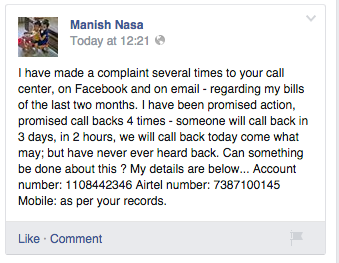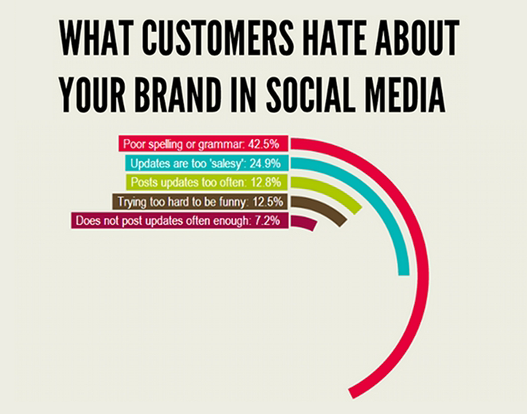Social media has been a buzzword for some time now, and the social media jobs are in demand.
However just being able to use Facebook and Twitter are not qualifications enough to do justice to a high responsibility social media gig. Social media is the face of a company that lends it a human and social touch. Every word, every image that gets posted on a company’s social media platform is taken as its own stand, and the company’s held accountable for it. It is therefore critically important to be responsible when representing a brand. In light of recent events, we bring you 8 cautionary tales of social media blunders, examples, and how not to make them.
1. Don’t use tragedy as an opportunity. Know what to tweet and when
There are some brands who have used times of a fatal disaster and a tragedy as an opportunity to cash in on the ongoing chatter and plug their products. Their posts have met with relentless flak and ridicule. Be sensitive around news of disasters and if you cannot post anything helpful, just a dignified silence will do. In this case, even though Lenskart soon apologised, the brand’s social media image has probably taken a beating for a long time to come.
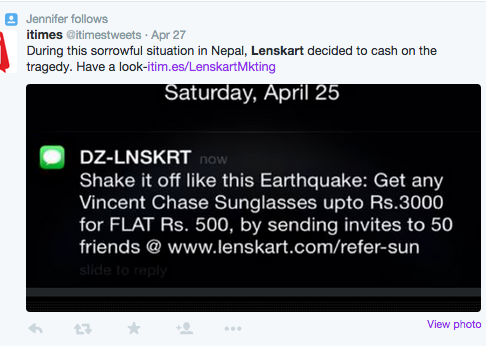
2. Don’t try to be a smartass if you’re not
Conversations amongst brands are the latest marketing trick. When 2 brands with a huge following, get talking with each other, there is bound to be some desired stalking on the conversation. However, before embarking on a potential eye-grabbing exchange of ripostes, ensure that you’re equipped to come up with a wittier comeback. Here’s an example of when Amazon tried to troll Zomato, and when Zomato in their signature cheeky style, had the perfect reply, Amazon was left with nothing wittier but a “That put a smile on our face” in response. The whole internet presented the news as “When Zomato trolled Amazon”- Not quite what Amazon was hoping.
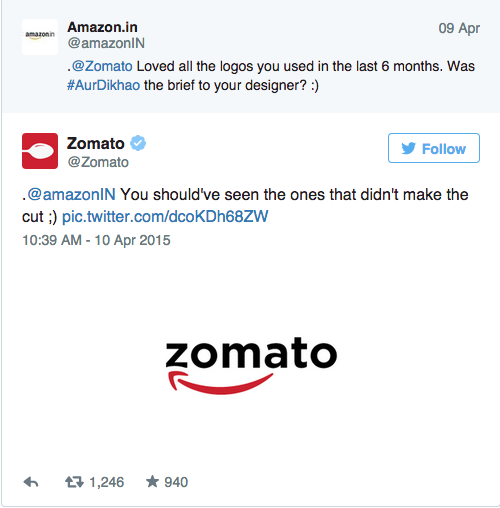
3. Don’t treat the company’s page as your personal account
The best of us make these mistakes. With the advent of multiscreens and multi account social media presence, one can often get confused and in a rush to make that life-changing update, mess up. Be very sure when tweeting or sharing an update from a brand account and ensure that you’re not logged into your personal account like this intern at NDTV did when he posted this tweet.
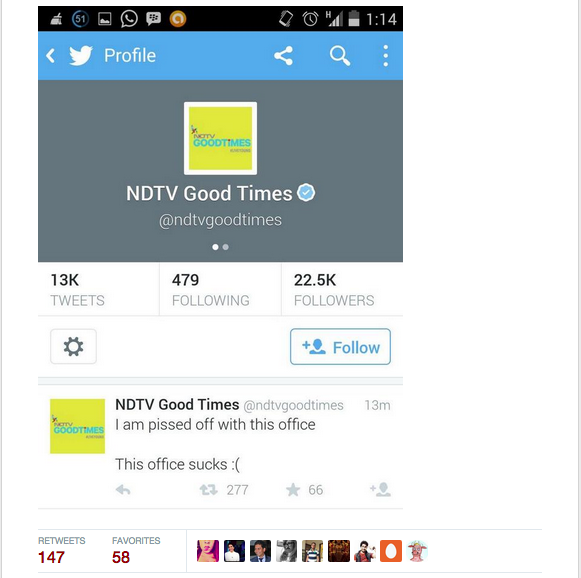
4. Don’t treat social media like a blatant spamming platform
Someone liked your page because they probably liked what you once shared and/or care about what you share. It helps to remember that a person may first come for the product, but later become a loyal customer as a result of the relationship you build with them. And probably posting 5 of your product images in quick succession is not the way to go. People like hundreds of pages these days, and inane marketing and advertising plugs from the company can make them hit the unlike button faster than anything by AIB goes viral. Make sure your content is a good balance of useful information, humor, product and topical news. Looks like Snapdeal, Myntra & Flipkart have managed to ruffle some feathers with its app and email spam.
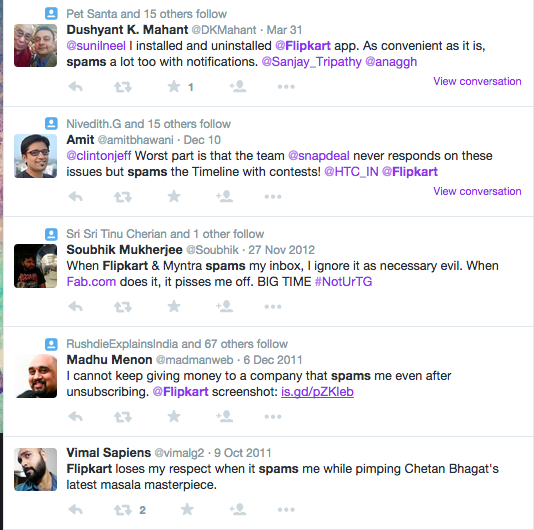
5. Double check your facts before you post
Much as we’d love to post interesting and enlightening information on the page, it’s possible that your facts are not correct. The internet can be a ruthless place and you cannot afford to be in the news for the wrong reasons. Before posting factual information, make sure you verify its sources. If nothing else, just google before posting. As we first mentioned in this article on employee blunders, this social media intern at MTV killed the very much alive art of living guru Sri Sri Ravi Shankar when meaning to send out a tribute to the music legend instead. This blunder was immortalised with a screenshot and as MTV would attest, is remembered cringingly, even till date.
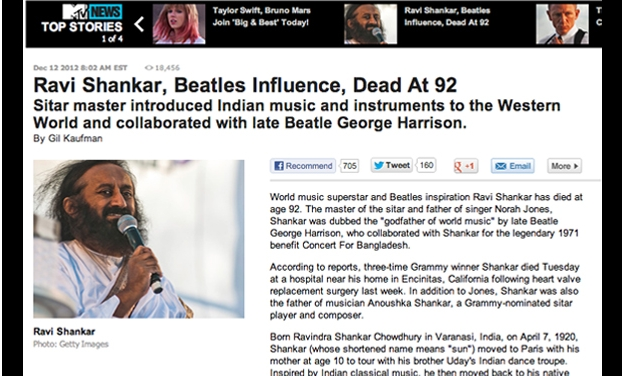
6. Do not ignore customer complaints
Rather than a one-way broadcast platform to inform and entertain your audience and plug your products, social media is a two-way platform to connect with your audience and hear from them. In a mad rush to sell their wares, many social media accounts make the classic mistake of ignoring genuine feedback and customer complaints. Like in this post on Airtel’s Facebook page, where this disgruntled customer’s long-winded rant went completely unheeded. Acknowledging a customer’s feedback or complaint is important. Unfortunately most brands seem to be selective in what they respond to.
7. Credit where credit due
“Content is king” you’ve heard this a million times by now. And in this mad scramble to keep churning out interesting and valuable content, you might be tempted to use the friendly Google search or your Facebook feed to scour those images for your next post. Make sure that each image you post is duly attributed to its owner or you could land yourself into a costly PR nightmare, shaming by the owner, if not a nasty legal soup. Not to mention it is highly unethical to simply copy and paste someone else’s product without so much as a credit. When graphic designer Akshar Pathak who’s behind the Tweetard minimal posters noticed Pepsi shamelessly use one of his creations without credit, Akshar was quick to share the transgression on his own social media platforms receiving a round of support (and Pepsi-shaming). However before Pepsi could get further damages, it decided to delete the image and personally apologise to Akshar, thus averting a potential PR disaster.

8. Avoid typos like Cancer
You were probably hired into a social media role based on your superior communication and writing skills, however there’s a fine line between “great communication skills” and impeccable grammar. While a social media job doesn’t necessitate Shakespearean writing skills, make sure the grammar and spelling basics are in place before you post. The internet is swarmed with grammar Nazis, and one typo could make your brand look unprofessional, and take away from the message.In fact, according to a recent study, consumers value proper grammar and spelling more than anything else when it comes to interacting with brands on social media. Proofread everything before posting. Trust the squiggly red lines, and when in doubt, crosscheck with a colleague or the internet. Here’s a handy guide on some of the most common terms that are incorrectly used especially in India.
Know anyone in a social media job or planning to? Share this with them!

